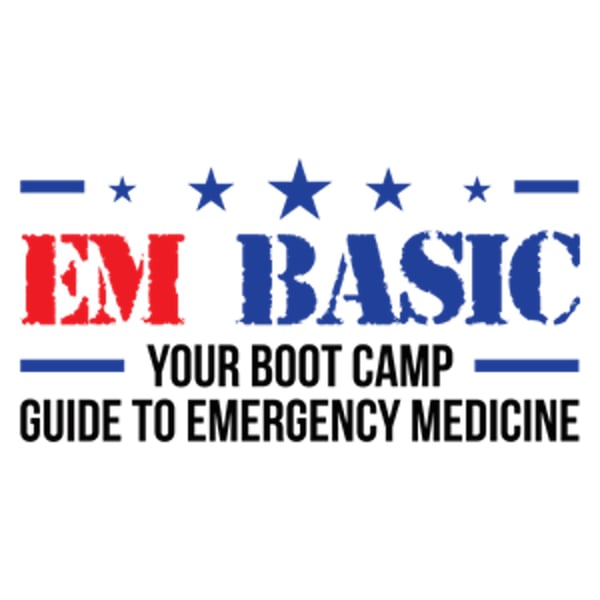Neuro exam supplement
EM Basic
EM Basic LLC
4.6 • 665 Ratings
🗓️ 19 June 2012
⏱️ 9 minutes
🧾️ Download transcript
Summary
Since I refer to the neuro exam from the headache episode, I decided to take that part of the episode and make a supplement so you can easily review the "5 minute ED neuro exam." Let me know if there are any other topics that you would like me to make into a supplement like this.
Transcript
Click on a timestamp to play from that location
| 0:00.0 | Hey, everybody. This is Steve Carroll from the Em Basic podcast. So I just posted the episode on dizziness, |
| 0:06.7 | and as always, with any neurological topic, I referenced the neuro exam that I talked about in the |
| 0:11.9 | headache episode. So what I have today is just a clip from the headache episode of how to do a |
| 0:17.8 | neuro exam. So if you want to refer back to it about how to do a complete |
| 0:21.5 | neuro exam, it's now its own episode. It's about seven minutes long, and I hope this helps you guys out. |
| 0:27.5 | All right, that's it for now. I'll talk to you later. Now let's talk about the physical exam. |
| 0:33.1 | In these patients, it is very important to do a complete but brief neuro exam. I'm going to go through |
| 0:38.4 | what I call my five-minute ER neuro exam. While it may not be as complete as an exam done |
| 0:43.9 | by a neurologist, it will cover all the important neuro findings that we need to know to rule out |
| 0:49.1 | serious conditions. Once again, describing this exam over a podcast is not ideal, but if you follow along in your head with the exam movements, then you can start to get an idea of what needs to be done on every neuro exam. |
| 1:00.1 | Just like any exam, it's helpful to start head to toe so you don't miss anything. |
| 1:04.4 | Start by testing the cranial nerves in a systematic fashion. |
| 1:08.0 | Check pupil response with a pen light or an ophthalmoscope. You also want to check for papal edema. It's kind of difficult to do in the ED without a dilated pupil, but if you can visualize the optic disc, check for papal edema. Next, check extraocular movements with your finger, paying attention for anastagnus. Next, check the facial sensation by touching both sides of the patient's |
| 1:28.2 | face and asking if it feels the same. Next, have the patient puff out their cheeks like a fish. I usually |
| 1:34.0 | have to demonstrate this for them. Make sure that they puff out both sides equally. Next, ask the patient |
| 1:39.9 | to smile. Then have the patient shrug of their shoulders. Finally, have the patient turn their head to the left |
| 1:45.5 | and right, as well as flex and extend their head all the way. The head flexion and extension is not a part |
| 1:51.5 | of a traditional cranial nerve exam, but it's a good screen for meningismus. Next, you'll want to test |
| 1:56.9 | motor strength and find motor movements. Ask the patient to grab your two fingers and |
| 2:01.0 | squeeze. Examine for any weakness or asymmetry and grip strength. While the patient still has |
| 2:06.2 | your fingers in their hand, ask them to push you away. Next, ask them to pull you back towards |
| 2:11.1 | them. This tests their bicep and tricep strength. Just make sure to brace yourself if the patient |
... |
Please login to see the full transcript.
Disclaimer: The podcast and artwork embedded on this page are from EM Basic LLC, and are the property of its owner and not affiliated with or endorsed by Tapesearch.
Generated transcripts are the property of EM Basic LLC and are distributed freely under the Fair Use doctrine. Transcripts generated by Tapesearch are not guaranteed to be accurate.
Copyright © Tapesearch 2025.

